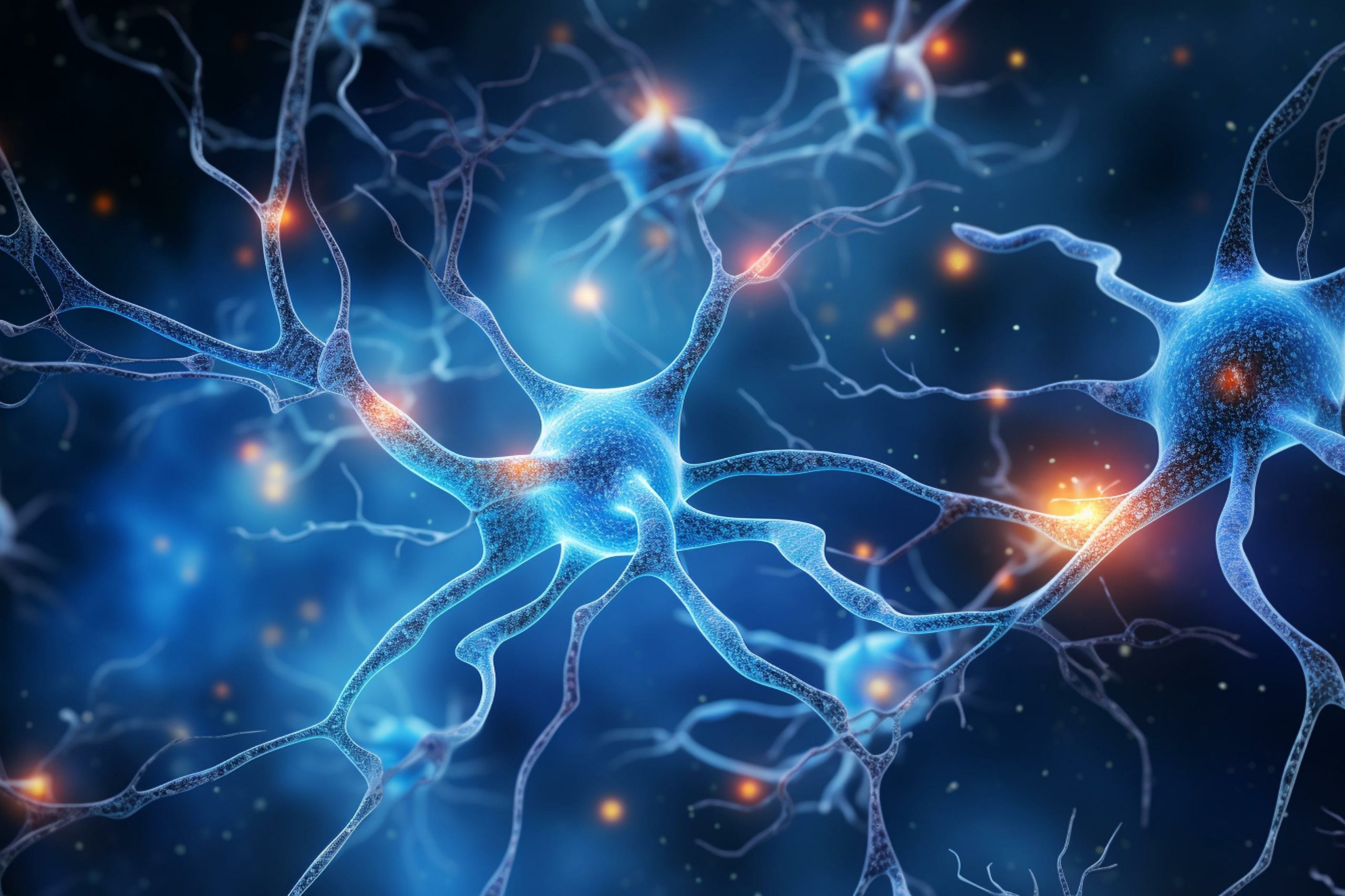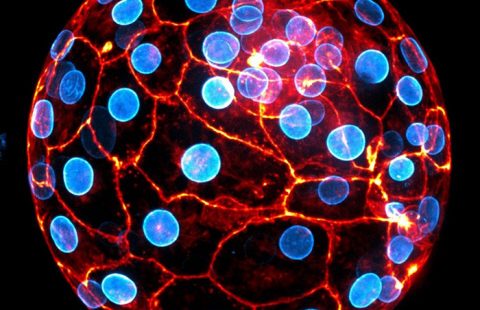 It was widely accepted that families of synaptic receptors transmitted excitatory, and others inhibitory, messages to neurons. © Adobe Stock
It was widely accepted that families of synaptic receptors transmitted excitatory, and others inhibitory, messages to neurons. © Adobe Stock
Contrary to all expectations, GluD1 – a receptor considered to be excitatory – has been shown in the brain to play a major role in controlling neuron inhibition. Given that alterations in the GluD1 gene are encountered in a certain number of neurodevelopmental and psychiatric disorders, such as autism (ASD) and schizophrenia, this discovery opens up new therapeutic avenues to combat the imbalances between excitatory and inhibitory neurotransmissions associated with these disorders. Published in Science, this research is the result of collaborations between researchers from Inserm, CNRS and ENS at the ENS Institute of Biology (IBENS, Paris, France) with their colleagues at the MRC Laboratory of Molecular Biology in Cambridge, UK.
The complexity of the brain’s function reveals many surprises. While it was widely accepted in brain activity that families of synaptic receptors (situated at the extremity of a neuron) transmitted excitatory, and others inhibitory, messages to neurons, a study co-led by Inserm researchers Pierre Paoletti and Laetitia Mony at the ENS Institute of Biology has shed new light on this.
To understand what it is all about, we need to go back to the basics. An ‘excitatory’ synapse triggers the creation of a nerve message in the form of an electrical current if a receptor on its surface is able to bind to an excitatory neurotransmitter present in the interneuronal space, most often glutamate. This is called ‘neuronal excitation’. However, an ‘inhibitory’ synapse prevents this neuronal excitation by releasing an inhibitory neurotransmitter, often GABA. This is called ‘neuronal inhibition’. Thus, the families of glutamate receptors (iGluR) and GABA receptors (GABAAR) are considered to have opposite roles.
Toutefois, un sous-type de récepteur au glutamate appelé GluD1 intriguait les scientifiques. En effet, alors qu’il est censé avoir un rôle excitateur, celui-ci est préférentiellement retrouvé au niveau de synapses inhibitrices. Cette observation, effectuée par l’équipe de la chercheuse Inserm Cécile Charrier à l’Institut de Biologie de l’ENS en 2019, avait interpellé la communauté scientifique car le gène GluD1 est souvent associé à des troubles du neurodéveloppement comme l’autisme ou à des maladies psychiatriques de type troubles bipolaires ou schizophrénie, dans les études génétiques de population humaine. Comprendre le rôle de ce récepteur représente donc un enjeu de taille. Pour y voir plus clair, l’équipe de Pierre Paoletti a étudié ses propriétés moléculaires et sa fonction, à partir de cerveaux de souris, au niveau de l’hippocampe où il est fortement exprimé.
However, a glutamate receptor subtype called GluD1 intrigued the scientists. Although it is meant to have an excitatory role, it is preferentially found at the inhibitory synapses. This observation, made by the team of Inserm researcher Cécile Charrier at the ENS Institute of Biology in 2019, attracted the interest of the scientific community because the GluD1 gene is often associated with neurodevelopmental disorders (e.g. autism) or psychiatric conditions (e.g. bipolar disorders or schizophrenia) in human population genetic studies. Understanding the role of this receptor is therefore a major challenge. To find out more, Paoletti’s team used mouse brains to study its molecular properties and function in the hippocampus where it is strongly expressed.
An atypical role
Contrary to its name, the researchers already knew that the GluD1 receptor is unable to bind to glutamate. But in this study they were surprised to find that it bound GABA. Radu Aricescu’s team in Cambridge even described in the publication the fine atomic structure of the site where GluD1 interacts with GABA, using a technique called X-ray crystallography[1].
In principle, its role in the brain is therefore not excitatory of neuronal activity but inhibitory. Taking this finding into account, can we still say that this receptor belongs to the glutamate receptor family?
‘While the question remains, the analyses of phylogeny (relationships between genes and proteins) and the structural data do all show that it belongs to it. However, it is possible that certain mutations acquired during the course of evolution have profoundly modified its functional properties’, explains Paoletti.
Another source of curiosity is that this receptor does not function as a ‘conventional’ glutamate receptor or as a GABA receptor. Both cause the opening of channels in the cell membrane enabling the passage of ions responsible for the excitation or inhibition of the neuron. The GluD1 receptor however does not allow any channels to be opened. Its activity results from other internal mechanisms within the cell, which remain to be clarified.
Finally, this research suggests a major regulatory role for GluD1 in relation to the inhibitory synapses. Indeed, when activated by the presence of GABA, the inhibitory synapse is more effective. This manifests as a greater inhibitory response that lasts for a few dozen minutes.
‘In other words, GluD1 reinforces the inhibition signal. Perhaps by promoting the recruitment of new GABA receptors at the synapse? In any case, we are talking about a key regulator’, explains Mony.
For the scientists who contributed to this research, this discovery marks a real step forward.
‘These findings pave the way for a better understanding of the imbalances between excitatory and inhibitory messages in the brain in neurodevelopmental and psychiatric disorders, such as ASD and schizophrenia, or in conditions characterised by neuronal hyperexcitability, such as epilepsy. Following that, it will be important to study the potential of GluD1 as a therapeutic target for restoring better balance and reducing symptoms in these disorders’, they conclude.
[1] A physicochemical analysis technique based on the diffraction of X-rays by the matter to determine its molecular composition and 3D structure.
These contents could be interesting :


